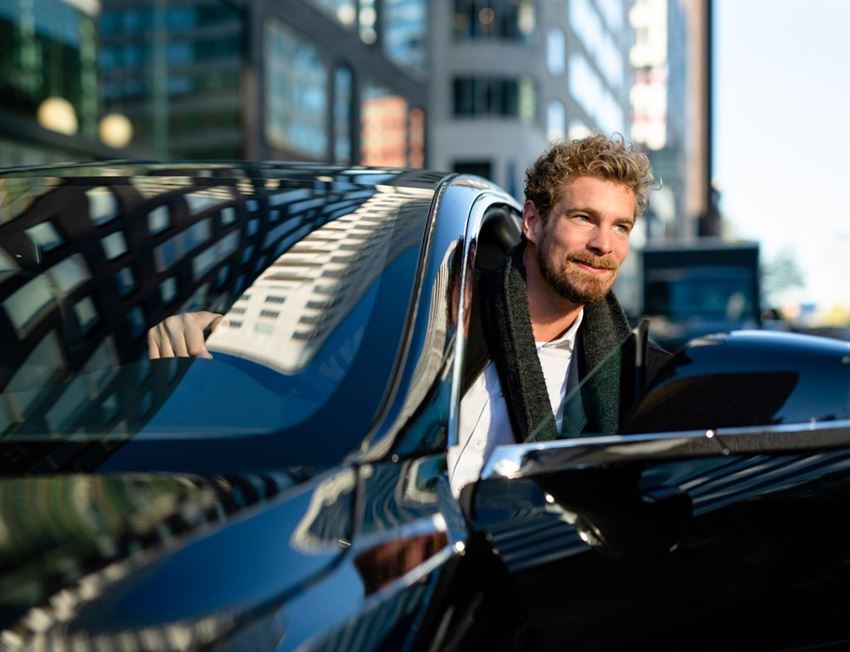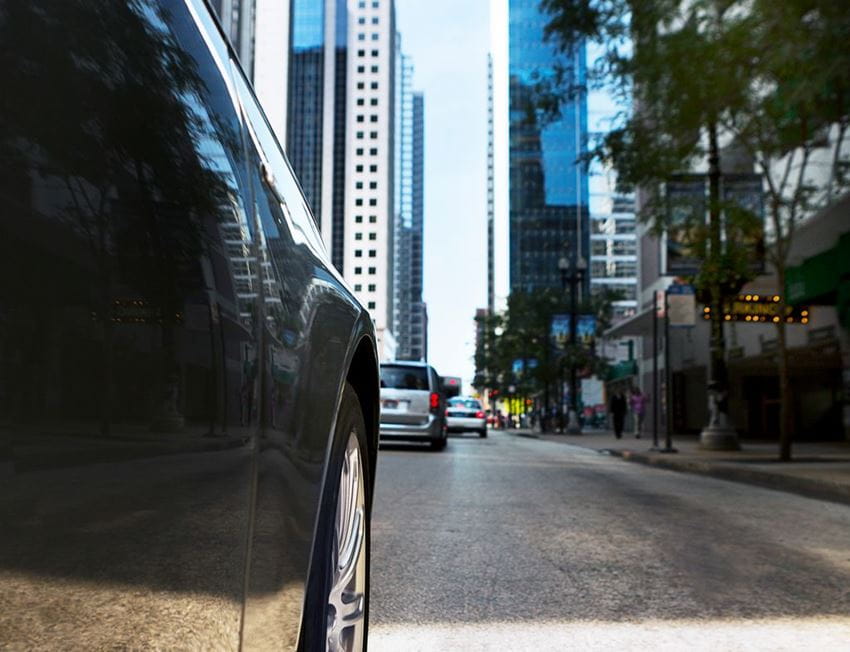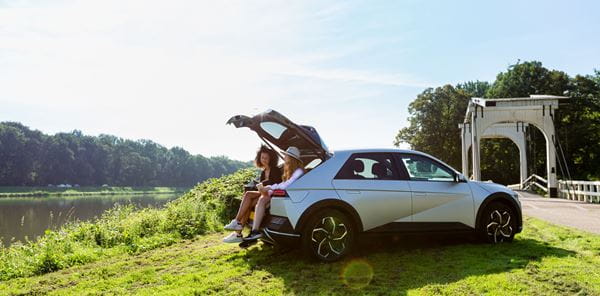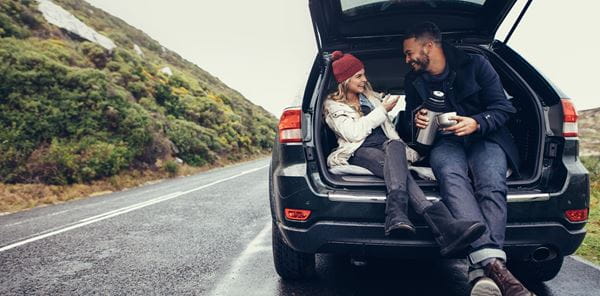
Europe's low-emission zones: where can you still get around with which car?
Anyone driving an internal combustion engine (ICE) vehicle will find it increasingly difficult to get around European cities. The EU is moving decisively towards emission-free cars. For instance, by 2035 the sale of new petrol and diesel cars will be banned. And more and more European big cities are introducing measures to curb the use of polluting vehicles, such as low-emission zones.
Low-emission zones (LEZs) and ultra-low-emission zones (ULEZs) keep many vehicles out of city centers. These zones are also part of the ambitious EU "Fit for 55" project, which aims to reduce greenhouse gas emissions by 55% by 2030, compared to the level in 1990.
Legislation is constantly changing, so we would like to give you an overview of the latest developments. Below, you will discover more about the LEZ and ULEZ regulations in Europe's biggest cities. Good to know when travelling in your own car or renting a car during your holiday.
LEZ in Belgium LEZs have already been introduced in Brussels, Antwerp and Ghent. In 2017, Antwerp provided the Belgian first by declaring the area inside the ‘Ring’ a low-emission zone. A year later, Brussels imposed an emission restriction for the entire Brussels Capital Region. In 2020, old cars were also banned from the inner city of Ghent. The Walloon cities of Charleroi, Liège and Namur are also soon jumping on the bandwagon. There are even plans to extend this to all Walloon cities, but at present this has not yet materialized. Within the low-emission zones in Antwerp and Ghent, you are no longer welcome with a Euro 4 diesel since 2020. Since this year, in Brussels too, you can only enter with a diesel car with Euro 5 standard or higher and a petrol car with Euro 2 standard or higher. In the future, low emission zone standards will become even stricter. Find out more about LEZs in Belgium in this blog.
LEZ in London, UK London makes the distinction between low-emission (LEZ) and ultra-low-emission (ULEZ). The LEZ is valid throughout the city and surrounding areas and imposes restrictions on larger vans and minibuses, buses, coaches over 5 tons, trucks and special heavy vehicles over 3.5 tons. The ULEZ applies in inner-city London and places restrictions on motorbikes, three-wheelers, four-wheelers, cars, private hire vehicles, small vans, larger vans and minibuses. Going to London in your own car? If so, register your vehicle with Transport for London (TFL). If your car does not meet emission standards, you will pay a daily charge.
Paris, France In Paris, heavy vehicles face restrictions every day between 8am and 8pm. To enter the city during that period, they must have a Crit'Air sticker of 3 or higher. There will also be a zero-emission zone in Paris in the near future. From 2030, the French capital will ban all petrol and diesel vehicles from driving in this zone from Monday to Friday, from 8am to 8pm. Vehicles must wear a green Crit'Air sticker to access this zone. Foreign vehicles must also have an emissions sticker.
Madrid, Spain All cars entering Madrid's LEZ must meet the minimum standard: a B-sticker. There are exemptions for trucks, vans, motorbikes, mopeds, historic vehicles, emergency vehicles and transport for people with disabilities. Depending on your emissions sticker, parking fees in the city also vary. Foreign vehicles must also meet the minimum standard, but there is no requirement to display an emissions sticker.
Lisbon, Portugal The LEZ in Lisbon is divided into two sections: Zone 1 and Zone 2. Both are active on weekdays from 7am to 9pm. In Zone 1, vehicles must meet the Euro 3 emissions standard to enter. In Zone 2, vehicles must meet the Euro 2 standard. Vehicles over 7.5 tons are not allowed to enter either zone during active hours. The city also has restricted traffic zones. There, between 10am and 8pm and between 1am and 8am, only vehicles with a green, red or blue sticker are allowed to enter. The same rules apply to foreign vehicles.
Amsterdam, the Netherlands To enter the LEZ in Amsterdam, diesel passenger cars, diesel delivery trucks and motorhomes must meet a minimum standard of Euro 4. Diesel trucks, as well as buses and coaches, must meet a minimum standard of Euro 6. This zone is active 24 hours a day, 365 days a year. If you are coming to Amsterdam in your own car, it is best to contact the information line of the municipality of Amsterdam.
Berlin, Germany Any vehicle entering the Berlin LEZ must carry a green sticker. For diesel vehicles, this means they meet the minimum standard of Euro 4. For petrol vehicles, a minimum standard of Euro 1 is required. Vehicles that do not meet these standards can be fitted with a particulate filter to qualify. This zone is active 24 hours a day, 365 days a year. These regulations also apply to foreign vehicles.
Rome, Italy Rome's LEZ is divided into three sections: the green zone, the railway ring and the city centre. In the green zone, petrol vehicles must meet the Euro 2 standard, while diesel vehicles must meet the Euro 3 standard. In the railway ring, petrol vehicles must meet Euro 3 standard and diesel vehicles must meet Euro 4 standard, while diesel mopeds and engines must meet Euro 2 standard. Both zones are active from Monday to Friday. In the city center, petrol cars must meet Euro 2 standard and diesel cars must meet Euro 4 standard. The same rules apply to foreign vehicles.
Oslo, Norway In cases of high air pollution, Oslo bans diesel cars, vans, trucks and buses that do not meet Euro 6 emission standards. In addition, the city may close municipal car parks within a "red zone". The temporary ban on diesel vehicles also applies to foreign vehicles.
Copenhagen, Denmark Buses and trucks must be registered in Copenhagen in or after 2015 to enter the LEZ. Older diesel vehicles can still enter the zone if they have a particulate filter installed. Non-Danish vehicles must be registered in the Copenhagen LEZ no later than the day of entry.
Stockholm, Sweden All passenger cars, minibuses and vans entering the LEZ in Stockholm must meet a minimum emission standard of Euro 6. Vehicles meeting these standards do not have to display a sticker; older vehicles with exemptions must display a sticker. This zone is active 24 hours a day, 365 days a year. In the city center, all trucks and buses must meet an emission standard of Euro 6. All foreign vehicles must meet the same standards.
Our net-zero commitment LeasePlan is leading the transition to zero-emission mobility and has set a goal of achieving net-zero emissions for its funded fleet by 2030. As a founding member of the EV100 - a global initiative of progressive companies seeking to accelerate the transition to EVs - sustainable mobility is at the base of everything we do.







